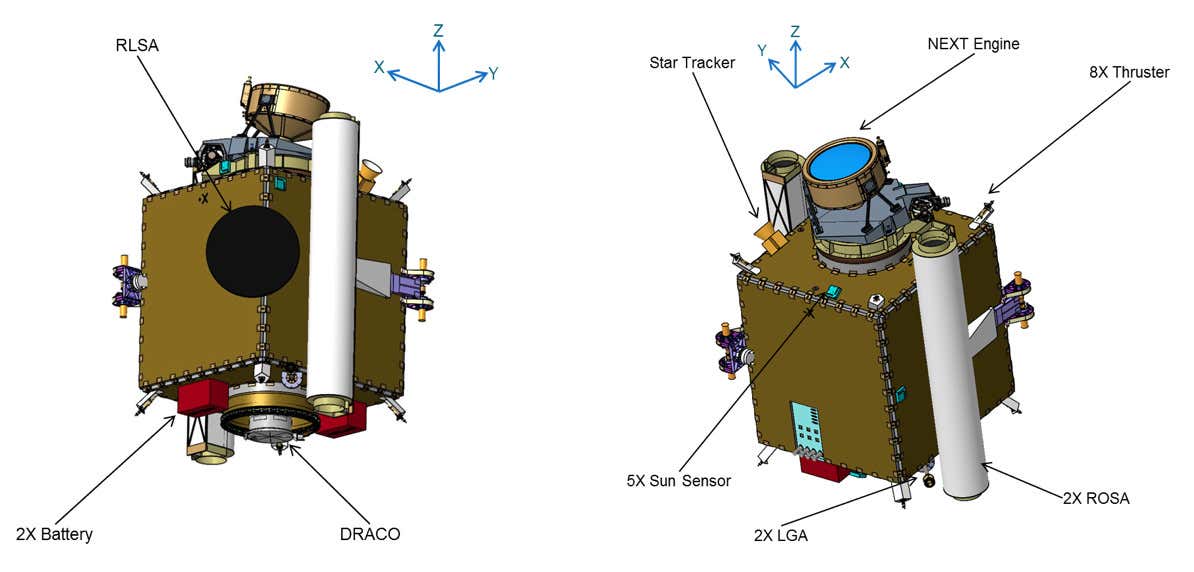NASA and SpaceX set Tuesday night as a launch date for a spacecraft designed to hit an asteroid and test if it is an effective way to respond to such threats.
“Targeting Tuesday, November 23 at 10:21 pm PT [Pacific Time] for Falcon 9’s launch of NASA’s Double Asteroid Redirection Test [DART],” SpaceX said via Twitter on Friday. “NASA will intentionally crash the DART spacecraft into an asteroid to see if that is an effective way to change its course, should an Earth-threatening asteroid be discovered in the future.”
The DART mission will be launched aboard a SpaceX Falcon 9 rocket from Vandenberg Air Force Base in the US state of California.
The spacecraft is set to hit the smaller asteroid of the two-asteroid system Didymos and change its trajectory through kinetic impact.

The diameter of the smaller asteroid, known as Dimporphos, is about 160 meters (530 feet) while the larger is about 780 meters, but they pose no threat to Earth. The size of the DART is hundreds of times smaller than Dimorphos and will hit it at the speed of 24,000 kilometers per hour (14,900 miles per hour).
How does DART work?
DART is NASA’s first space mission to test asteroid deflection. The spacecraft will not slow down, colliding with the asteroid’s small moon Dimorphos on purpose. The collision should reduce the time it takes Dimorphos to orbit Didymos, demonstrating the effectiveness of the kinetic impactor technology.
Didymos and Dimorphos are particularly well-suited targets for DART. They pass in front of each other as seen from Earth, despite the fact that Didymos is only 780 meters (half a mile) broad and Dimorphos is only 160 meters (525 feet) across.
For mission officials on Earth, a CubeSat flying with DART will observe the spacecraft’s deadly collision; ground-based telescopes will also assist in seeing the impact and how it impacts Dimorphos’ orbit around Didymos.
NASA hopes that this mission will provide scientists with their first actual data on how a kinetic impactor approach to planetary defense can work in the real world, rather than only in simulations.
The European Space Agency will launch Hera, a mission to examine Didymos and Dimorphos in-depth, two years after DART’s fireworks at Dimorphos. This will enable scientists to examine DART’s impact crater and fully comprehend the mission’s impact.
The DART spacecraft, which was developed and manufactured at the Johns Hopkins Applied Physics Laboratory (APL), has a small Roll-Out Solar Arrays (ROSA) and the Didymos Reconnaissance and Asteroid Camera for Optical (DRACO) navigation system.

Need To Avoid Asteroid Collisions
Consider the fate of the dinosaurs to understand why scientists are worried about asteroids. Experts in planetary defense are striving to prevent the kind of disaster that wiped off most of these species around 66 million years ago.

Several astronomers and scientists have predicted that asteroids will be one of many natural phenomena that will do the most damage if we do not have a robust defense system in place to tackle them.
Presently, experts are unaware of any enormous asteroids on their way to Earth. However, if they find one, the second phase of planetary defense begins: striving to prevent mankind from becoming extinct like the dinosaurs, according to experts
DART’s overall budget is $313.9 million, spread out over eight years, and includes spacecraft development, launch vehicle development, and mission operations through late 2022.
“It’s a miracle what this team has accomplished, with all of the obstacles in the way like COVID and the development of so many new technologies,” said Elena Adams, DART mission systems engineer at the Johns Hopkins Applied Physics Laboratory (APL) in Laurel, Maryland.
“But the reason why we succeeded so far is because our team is excited, extremely sharp, and they genuinely want to show that if an asteroid was coming toward Earth, we could prevent a catastrophe.”
“I’m both amazed and grateful that DART has gone from a twinkle in the eye to a spacecraft in final preparation for launch within 11 years,” said Andy Cheng, DART investigation team lead at APL and the one who came up with the idea of DART. “What made it possible was a great team that overcame all the challenges of building a spacecraft to do something never done before.”
- Contact the author at ashishmichel@gmail.com
- Follow EurAsian Times on Google News




